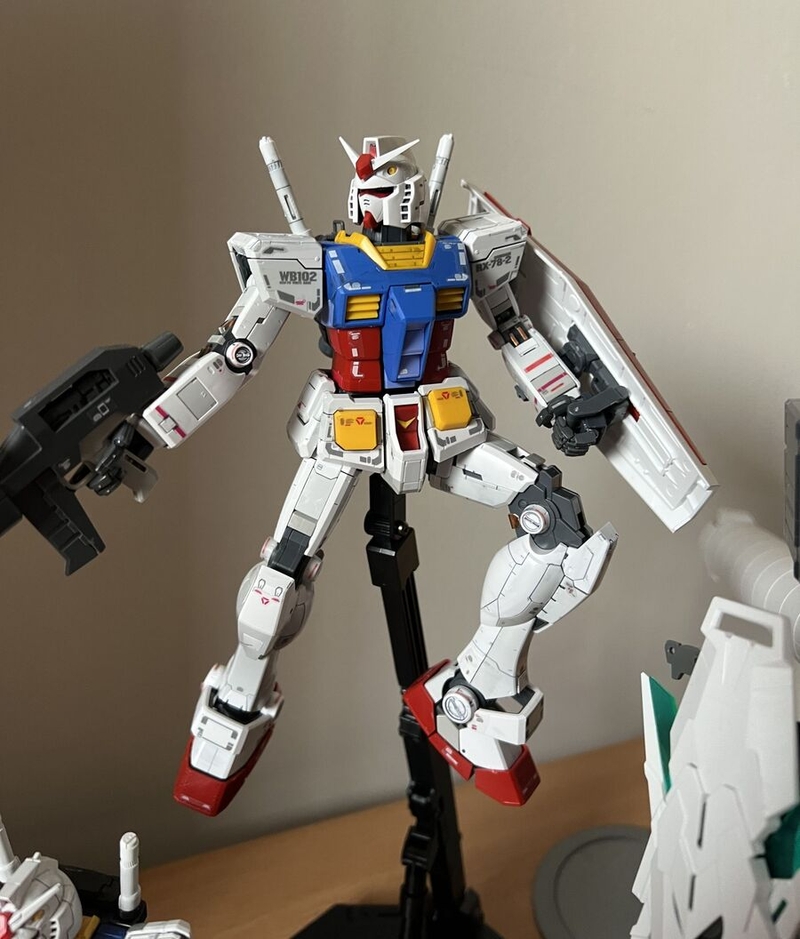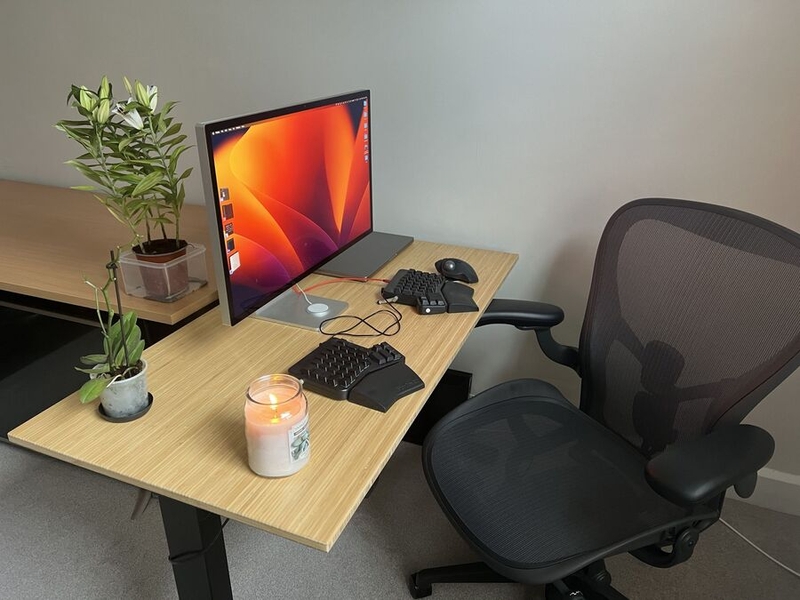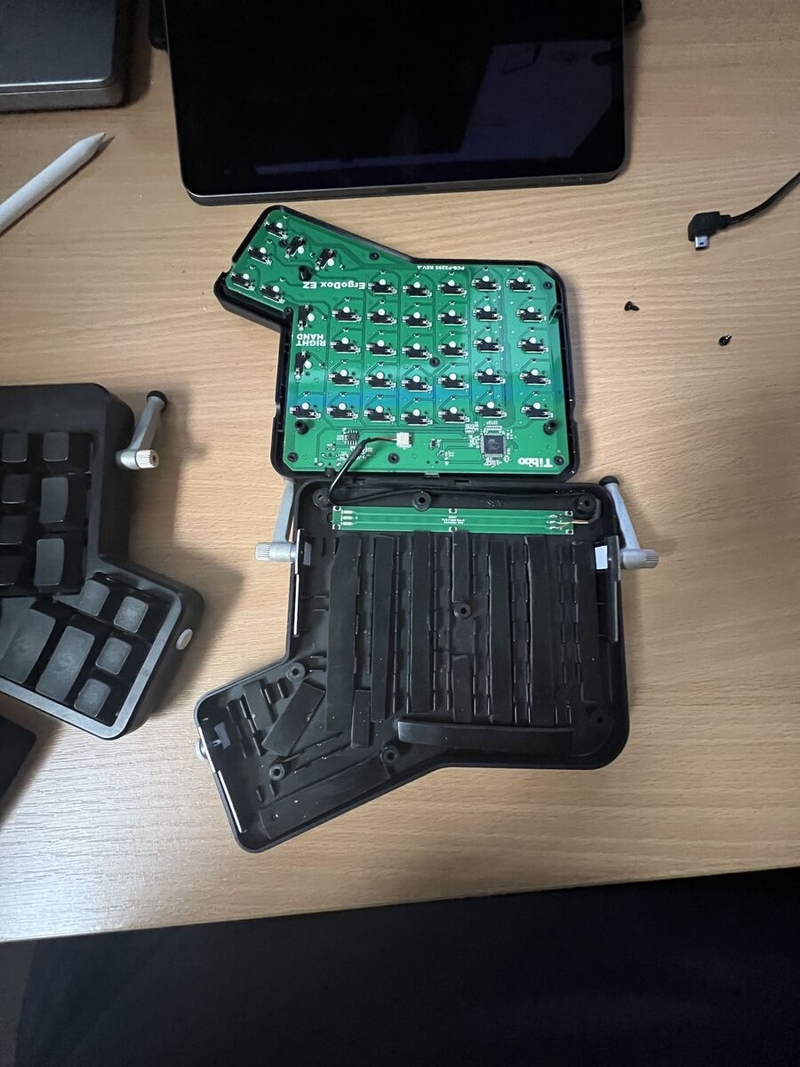The people who use our boards.
359 interviews since 2018
The people who use our boards.
Ben Alldridge
Software Engineer / ExpressionistWho are you, and what do you do? What do you like to do outside of work?
Greetings! I’m Ben: software engineer, tinkerer, and curious thinker. It’s sometimes tricky to define oneself with such a short assembly of words and anecdotes, and the advocacy of others has done a lot of the heavy lifting for my career. Occasionally, however, my creativity finds a foothold in something that allows me to reach out to the wider world, so here I am!
At my core, I believe myself to be an expressionist in almost everything I do. Whether I’m designing or writing code, painting, building, writing, making banana pancakes on a rainy Sunday morning here in England, or even just sitting quietly by a window while the radiator slowly toasts my arm. I express myself through my work, my ideas, and my creations. I try to add a splash of colour to my life and the lives I touch.
Primarily, my days are spent at my desk, working. I’m a software engineer for CrashPlan, a cloud backup product. I don’t work on the product much myself, but instead I focus my efforts to helping others be more productive, with internal tools. I, for better or worse, have an aptitude for figuring things out, which means I’ve become sort of a “go-to” person when people get stuck or need a guiding hand. This seems to be where I’m at my best, saving the day, operating as a free agent, conjuring new ideas. I recall a conversation with one of our directors about making a career out of the things people would rather not do, and we discussed the incredible opportunity in those situations, if you’re willing to just say “I’ll do that,” regardless of whether you have the knowledge (yet). That’s a good summary for my job right now; I find opportunity in the things people would rather avoid, and honestly, I’ve never been happier. I work inconsistent (read: extended) hours because I try to ride the waves of my energy and creativity, but because I mostly work with teams running on Central Time. There is a meme in the company Slack where people tell me “Ben, go to bed!” Most often they’re correct, but by that time I’m often two espressos the wrong side of a good night.
When I’m not working, I try to live a simple, uncomplicated life with my partner. I follow principles of mindfulness, and am very sensitive to the content I consume. For example, I begrudgingly have a LinkedIn and Twitter account for networking, but no other social media, and I watch maybe two movies a year. I can probably attribute this to Marcus Aurelius and his damned sense of urgency; I try to focus on what gives my life meaning, and whatever adds richness to my life, and the lives around me, and I try to do so without procrastination. Realistically though, most of my energy is spent trying to explain the above without sounding pretentious (spoiler, I fail a lot).

I’m not entirely selfless, however, and typically you’ll find me reading, unaware that there exists a universe outside the boundary of the page. My current nonfiction book is Reality+ by David J. Chalmers (my favourite philosopher, if such a thing is possible), as I’m a huge fan of the philosophy of consciousness and perception. I like to read the occasional fiction novel too in tandem, if something piques my interest, and that is currently Children of Memory by Adrian Tchaikovsky, a book I’ve been uncharacteristically excited for. Otherwise, I’ll either be building something, which right now happens to be Gundam kits, tending to my plants, or spending time with my partner. Above all, I try to do all of these things with as much kindness as possible, and treat people with the complexity and depth we all require.

What hardware do you use?
My main machine is a MacBook Pro with an M1 Pro and 32GB of memory. I’m a Linux-head at heart, but the MacBook just puts me in a different zone, and demands my best work.

Paired with that, I’ve recently settled into an Apple Studio Display. It used to be that I wanted a lot of screen real estate (I previously had a 42” screen), but I discovered that it introduces distractions and dominates my desk. The Studio Display is honestly the best screen I’ve ever used, period; it’s 5K, flows with the feng shui I’ve attempted in my space, and it just works. With the addition of Stage Manager in MacOS Ventura, my workflow has never been better.
Of course, I couldn’t forget my keyboard. I use an ErgoDox EZ, but I do own a Moonlander and a Planck EZ. I’ve found the ErgoDox to fit my large hands the best. I have to be honest, though, I originally did forget to add it to the list of hardware, because it’s such a fundamental part of me that I may as well include my body in this list too. Like a lot of things I’m listing here and below, the ErgoDox fades into the background, a quiet workhorse, the conduit by which my ideas flow.
To accompany my board is my Logitech MX Ergo. I don’t think there is much to say here; it’s a pretty well-established trackball mouse, and means I don’t need a mouse pad, and it reduces arm movement. The ball also acts as a fidget toy as I try to spin it as fast can I possibly can.
Honourable mentions are my orchid, which is unfortunately not flowering at the moment, my lily, which is, and the almost-obligatory Herman Miller Aeron chair, which facilitates my sometimes fifteen-hour days without breaking a sweat.
And what software?
I spend most of my time in some JetBrains IDE. I used to be an elitist Vim user, but as I’ve matured I found myself wanting to surround myself with tools that I can forget are there, so I can focus on the work. I also use a lot of languages—right now mostly Go, Rails, Java, and Python (which is against my will)—so it’s nice to have a consistent experience. If I’m bashing out a quick script I will go back to Vim, however.
For my window management, I once used an app called Display Maid, which allowed me to save window positions, so I could stack everything in the middle of my screen (sometimes 10-20 windows). Now, though, I used the built-in MacOS Stage Manager which is leagues better for my workflow, and gives me fewer distractions.
I used to use Hyper for my terminal, because it had cool config files that I could tinker with, but these days I use iTerm2 exclusively, simply because it’s straightforward, UI-focused, and lets me get on with the important work.
For writing (including this), I use Highland 2 writing software, for, you guessed it, the simplicity. It has an awesome distraction-free mode, and Markdown support.
For note-taking and local documentation, I use Quiver. While it doesn’t have cross-device synching outside of putting it in iCloud or OneDrive etc, it fits my organisational style perfectly, and supports elegant code snippets. For my engineering journal, I use Visual Studio Code, as that goes up to my “today I learned” repo, and it allows me to quickly commit and push without a second thought (not a feature I like when writing anything important).
Honourable mentions are Wonderdraft and Dungeon Builder for when I’m building D&D campaigns, and Postman for quickly testing my APIs.
What’s your keyboard setup like? Do you use a custom layout or custom keycaps?
I’ve always felt a little intimidated by some of the layouts I’ve seen, with almost all keys having a custom label, multiple functions, and specific macros. In contrast, I feel like my layout is fairly standard-issue. The only two custom keys I really have are JetBrains shortcuts for navigating to declaration (goto dec), and usages (goto usage). They’re the only shortcuts I really use, because my work style doesn’t really benefit from cutting seconds off my work time, and I like using my mouse.
When I first started experimenting with boards, I did get some custom keycaps in a couple of group buys, but I eventually came to the conclusion that neutral made for a more immersive experience, for me at least. I’ve always been a fan of the unseen beauty in the world: a rough, beaten building with luxurious carpets, a rusty old Citroen with a shiny 600HP engine under the bonnet, or an ordinary ErgoDox invisibly tuned for the particular preferences of the user.
For the board itself, as it currently exists, I’m using painstakingly lubed Holy Panda switches, which is a result of extensive experimentation over the years with tactile switches. I found the response to be perfect for my typing speed, heavy enough to sit somewhere between a Cherry Brown and Cherry Clear. Their availability to actually purchase was a factor too, something I think a lot of keyboard enthusiasts can relate to. To dampen the noise even further, I purchased some neoprene foam and lined the internals with rows of it, just enough to reduce the harshness, but not so much that it completely subdued the character of the board. I feel like I’m reviewing a fine dining experience, but in essence, it’s my sound, and I’m quite fond of it.

What would be your dream setup?
To be perfectly honest, I don’t think I have one. There is a fantasy that pops up in my daydreams often where I’m in a concrete room, surrounded by thick cables, screens, and empty instant noodle containers, while hacking the mainframe (think Neuromancer), but in reality, there is no perfect setup for me, because my workspace should flow and move. If I notice something that is causing me a repetitive hassle, I’ll look at solutions. Right now though, my environment is comfortable and warm, with evidence that I’ve haphazardly skimmed some articles on feng shui. I can work for eighteen hours with no pain or strain, so as long as I maintain that as I age, anything is possible. Currently my setup is in motion, flowing with my routine and balanced with the elements. I will continue to focus on the work, and the things in life that bring me joy. I continue to be strict with myself, and try my best to be tolerant with others.




